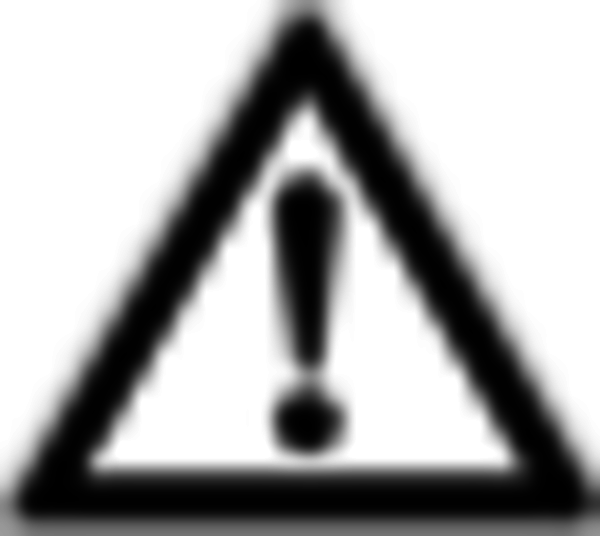Cleaning
 Risk of skin burns in the vicinity of the fan caused by hot air medium, hot motor or hot housing. There is a danger to life near high-temperature fans with airstream temperatures of up to 200 °C.
Risk of skin burns in the vicinity of the fan caused by hot air medium, hot motor or hot housing. There is a danger to life near high-temperature fans with airstream temperatures of up to 200 °C.
Before working on the fan, wait until it (motor, housing) has cooled sufficiently and the air medium has mixed with cold air and cooled to below 60 °C. The fan should then only be approached close up and then only be touched if you are certain that it has cooled down. This applies in particular to high-temperature fans.
- Use the inspection switch to switch the fan Off/Aus and fit a padlock to make sure it isn't switched on again.
- Wait until the fan has cooled down sufficiently and the impeller is stationary before removing the weather protection hood or any other protection against accidental contact or touching the fan.
- Remove the weather protection hood.
- Lock the impeller so that it cannot move any more. This protects you from unforeseen rotary movements, such as those which may be caused by air flows in the ventilation channel.
- Clean the impeller, remove layers of dirt, dust and grease.
A clean impeller is very important and prevents imbalances, which may result in hazardous situations and damage the fan. If impellers have curved blades, material may be deposited on the backs of the blades when conveying materials which are electrostatically charged or contain resin or adhesive. Clean the impeller carefully. Residue accumulating at certain points will cause imbalances sooner than an even layer of dirt will.
Replace the impeller if it is too dirty or if it has coatings which are causing imbalance.
- When air is drawn in, frictional/grinding dusts or corrosive air may wear the impeller and cause vibrations. Clean the impeller as previously described. If the impeller is heavily worn, replace it with a genuine spare part.
- Clean the inner parts of the fan and remove all contamination.
- The motor is outside the air flow: clean the motor regularly with a cloth. Remove all layers of dust and dirt to prevent the risk of fire (e.g. with high-pressure fans).
- Clean the fan’s intake opening and protective grille, if installed, to prevent blockages and overheating.
- Refit any components you may previously have removed. Ensure that the protective grille is positioned correctly.
- Fit the weather protection hood
- Before restarting make sure that there are not any tools or other foreign objects inside the fan. Never operate the fan without its protective grille (→ Unit overview) and protection against accidental contact at the inlet.
- Use the inspection switch to switch the fan On/Ein.
- Run a function test.
 Overheating and damage to units resulting from stopping at temperatures >60 °C
Overheating and damage to units resulting from stopping at temperatures >60 °C
In no circumstances should you stop the fan before the air medium inside it has reached a temperature of <60 °C. This will protect the motor from damage caused by overheating. If this temperature cannot be guaranteed, external cooling systems must be used. If the temperature inside the fan increases while it is idle, the operator must wait for the temperature to fall to below 60 °C before restarting.
 Cleaning and maintenance may only be undertaken by qualified personnel and under observation of the enclosed safety instructions.
Cleaning and maintenance may only be undertaken by qualified personnel and under observation of the enclosed safety instructions.